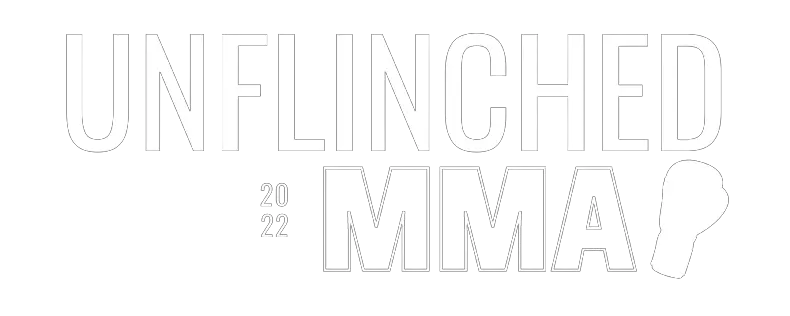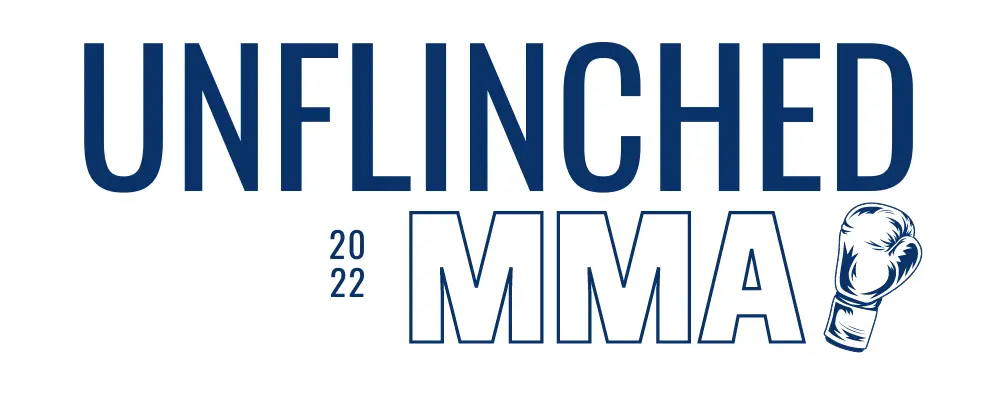8 Common boxing punch numbers are:
- Jab
- Cross
- Left Hook
- Right Hook
- Left Uppercut
- Right Uppercut
- Left Body Hook
- Right Body Hook
Did you just start boxing and are confused when your trainer seemingly says a few random numbers? If you want to improve your boxing skills, you’ll want to be familiar with the boxing punch numbers.
These numerical values will help you build good combos and work on your punching technique. Several beginner boxers have asked me what the numbers mean, and I aim to explain this through this article.
Table of Contents
What Are Boxing Punch Numbers?
Boxing punch numbers represent the height, speed, and power of different punches in boxing. The boxing punch numbers are numerical values that will help you build good combos and improve your punching technique.
Use these numbers as a starting point, and practice regularly to develop good combos that will knock out your opponent. By understanding these numbers, you can create various combinations that will be effective against most opponents.
The boxing punch numbers are essential for beginners and anyone who wants to improve their punching skills. By learning how to combine punches based on these numbers, you can create powerful combos that will knock out your opponents quickly.
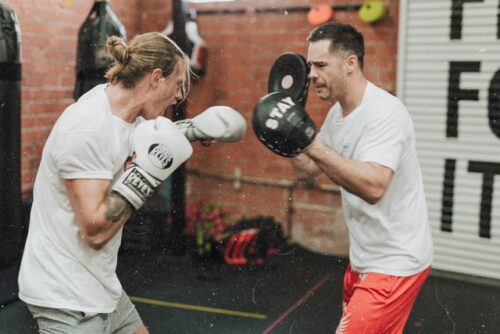
Punch numbers are often used when practising with a coach. You build and practise your combos using these numbers.
List Of Boxing Punching Numbers
Here is a list of boxing punching numbers to help you get started. Note that these numbers assume you are in an orthodox stance with the left foot at the front. If you are using a southpaw stance with the right foot at the front, then the punch numbers for left and right are switched.
1. Jab
The jab is one of the most basic punches in boxing. It’s a quick, powerful punch that can be used to set up other punches.
Jab is a straight forward punch that’s usually thrown with your off-hand (left for orthodox and right for Southpaw).
It is a highly versatile punch used to defend yourself and disrupt your opponent’s rhythm.
When you jab, make sure that you use the correct hand position. Your hand should be close to your shoulder.
You should also aim for the midsection of your opponent’s body. This will keep them at a distance and prevent them from landing powerful punches. Jabbing is an integral part of boxing, so make sure that you use it correctly!

Boxing jab is a quick punch to keep opponent at bay or to set up other heavier blows.
2. Cross
The cross is a powerful punch that can knock your opponent out. It’s a slower punch than the jab, but it has more power and can be used to finish your opponent. Cross is a straight forward punch that’s thrown with your dominant hand.
Cross is one of the most commonly used punches in boxing. It’s a fast and powerful punch that will KO your opponents if landed correctly. Be careful not to use too much energy when throwing this punch, or you’ll also end up hurting yourself.
Crossing is a fundamental part of boxing, but it also has many cons. Crossing can create openings for your opponent to land punches and get you hit by a counterattack. Additionally, crossing can distract you from your opponent’s attack and get you hit by a punch you weren’t expecting.
Make sure to use cross correctly to maximize its effectiveness and avoid these potential dangers. Don’t use it too often, and set a cross using jabs.

Boxing cross is a heavy punch, thrown with dominant hand with full body weight.
3. Left Hook
The left hook is an effective and damaging punch that you can throw within the shortest distance between you and your opponent. Throw a left hook by swinging your off-hand from the side and aim it at the opponent’s jaw or temple.
The left hook is also known as ‘lead hook’ because it’s thrown using your off-hand.
Make sure that your elbows are tucked in tightly towards your body. Use your shoulders like a spring to push your forearm and your fist toward the chosen target as you throw the lead hook without jerking your elbows. Your knees should be slightly bent before you deliver this punch.
4. Right Hook
The hook punch is an excellent option for putting opponents on the ground, as it has a high knockout rate. The right hook is the opposite of the left hook, but you use your dominant hand instead. Swing from the side and aim for the jaw or temple.
The hook is a powerful punch that can knock out your opponent with just one hit. It’s a slow punch but powerful and can easily take your opponent down.
The hook is a powerful punch that can knock your opponent out. It’s best used as an opening move, so ensure you’re prepared for it when you fight.
However, the con of this punch is that it can be easily blocked and countered. Additionally, the hook punch takes a lot of wind out of an opponent, leading to a loss in the ring.
The hook is a punch to knock opponents out or weaken their defense. The hook is one of the most important punches in boxing because it is the most effective at knocking out an opponent. It has a high chance of landing due to its speed and power and can put your opponent away if landed effectively.
Make sure you use proper form when throwing this punch, as improper use can injure yourself and your opponent.
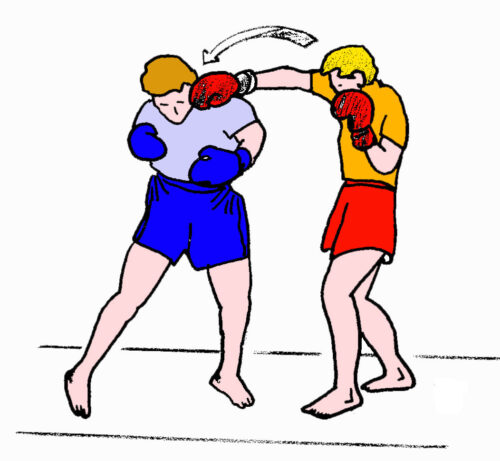
Boxing hook is a swinging punch that comes from either side. A left (lead) hook is much shorter but weaker, whereas right hook is stronger but requires bigger swing.
5. Left Uppercut
The left uppercut is best used when you are closer to your opponent and is done in an upward motion. Use your left hand and swing upward – aiming at the jaw.
Starting in the proper position is the most crucial step in delivering a left uppercut. It’s important to keep your knees bent while rotating your right hip forward and pulling your left hip back.
This will coil your hips and legs and cause them to erupt with rotational force. Most of the left uppercut force is produced by the hip rotation along with the upward thrust.
6. Right Uppercut
The uppercut is one of the most important punches in boxing. It’s a fast, powerful punch that can knock your opponent out if landed properly. Swing your dominant hand upward and aim for the jaw.
Make sure to use proper form when throwing this punch, or you’ll also end up hurting yourself.
The (left or right) uppercut has several advantages over other punches in boxing:
- It is fast and easier to throw than the left uppercut.
- It can be used to set up different punches as it is a quick and powerful punch.
- Because the uppercut is a short punch, it can be used to harass an opponent and keep them off balance.
- The uppercut can be used as an effective counterattack if the opponent lands a punch on you.
The uppercut is a devastating punch in boxing but has several drawbacks:
- It can leave you open to counterpunches.
- The punch can easily be blocked by an opponent.
- The uppercut is a very slow punch that doesn’t have much power.

Uppercut is a vertical punch, that’s aimed at the jaw. 1 good uppercut could knock out your opponent – regardless of the rounds.
7. Left Body Hook
The body hook shot is a very heavy punch that is thrown with the intent of hitting the opponent on the stomach or liver area. With a left body hook, you use your left or off-hand to punch.
Body hooks are also known as the liver shot and can be devastating. Body hooks are easier to land because most fighters focus on protecting their faces and keeping their body exposed.
I recommend throwing a couple of jabs and crosses to the face area to tighten their guard at the top and then surprise them with a powerful body hook. This is always effective.
8. Right Body Hook
Right body hook is where you swing at the body (specifically stomach or liver) with your dominant hand. This punch can be very dangerous if it connects, as it can cause serious injury to the stomach and intestines.
There are several benefits to using the liver shot in boxing. It can be used as an offensive or defensive tool, and it can be effective against a wide range of opponents.
Additionally, the liver shot is particularly damaging, which makes it an ideal weapon against heavyweights and boxers with a strong ground game.
There are a few drawbacks to using the liver shot in boxing. First, it is a very slow punch that can be easily blocked. Second, it is not a very effective weapon against opponents who are defensively minded. Finally, the liver shot is not particularly powerful, making it difficult to land cleanly.
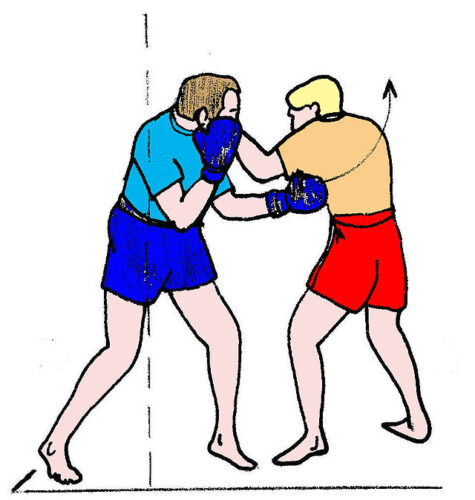
Body hook or body shoot is usually aimed at the liver and could KO an opponent with 1 hit.
Which Punch Is the Most Effective?
The most effective punch in many martial arts is the jab. The jab is a quick, short punch that lands on the opponent’s chin or nose.
It’s easy to hit and doesn’t require much power, so a skilled boxer can easily land several jabs in a row without putting too much stress on their arm.
Jabs are also the most common punch used in boxing. Jabbing is an excellent way to start a fight because it is an easy punch to land and has low power.
The jab is the most effective punch against a defensive opponent. The jab can easily penetrate a defensive opponent’s defense and land on their chin or nose.
Which Punch Is the Most Powerful?
Hook and liver shots are the most powerful punch in boxing. The hook is powerful because most punching power comes from your back and hip rotation. Liver shots in boxing are powerful due to their location.
An instant KO is guaranteed with a hook with a full rotation and direct hit against the temple or jaw.
Liver shots are powerful due to their location. The liver is located just above the stomach and is a large organ. When the punch lands on this area, it can cause significant damage. Furthermore, the liver is a vital organ and can be pretty sensitive.
This makes it a very potent punch to use in boxing. Once cleanly hit by a liver shot, a fighter will find it difficult to breathe, resulting in an instant KO.
Basic Boxing Combos
(1, 2) Jab and Cross
It is an effective one-two that is lethal. Beginners sometimes overcomplicate boxing when, in reality, keeping it straight forward can unexpectedly propel them far in their profession.
You can easily throw the jab between the opponent’s guard and then take advantage of this opening with a strong cross, or you can throw it to generate distance between yourself and your opponent without overcommitting. The boxer can choose the length and force of the jab and cross.
(1, 2, 3) Jab, Cross, Left Hook
The left hook to the head is thrown after the jab and cross. The combination is effective as it allows you to close the gap and hit the opponent easily with speed, allowing you to fend off any attacks from your opponent.
The opponent will frequently be distracted by punches and will put up a guard across from their face, which makes this combo effective.
(2, 3) Left Hook, Cross
It is a quick and deadly combo like the jab-cross. The combo involves hitting the two punches quickly and forcefully.
In particular, the cross serves to start the combination, and the left hook dispatches the opponent. This boxing combination has been utilized to the fullest extent by some of the great boxers.
(6, 3) Right Uppercut, Left Hook
A good basic combo can be simple to put up and is made to take advantage of your opponent’s weaknesses. The right uppercut and left hook punch combination fit this characteristic.
The initial uppercut forces the opponent to lower their hands in order to shield their jaw. The left hook is delivered immediately after the uppercut to take advantage of the opponent’s exposed side of the head.
The opponent is focused on defending the uppercut, making it simpler to strike a hook. This makes the left hook easy to land.
Advanced Boxing Combos
(1, 4) Jab, Right Hook
A jab and a right hook combination may be lethal and surprisingly simple to perform. Many opponents anticipate that after your jab, you’ll follow up with a cross. Opponents will be surprised if you instead throw a right hook.
When throwing this combo, you should be careful not to distance yourself from the opponent. This is so because whereas the rear hook is a brief blow, the jab is a long-range punch. Make sure to take a step after the jab to close the gap.
(2, 3, 2) Cross, Left Hook, Cross
Cross, Left Hook is extended in this combo. To put some space between you and your opponent, you add a cross at the end.
Every punch in this combo is delivered from a different angle than the one before it, which is an efficient tactic for confusing your opponent and taking advantage of gaps in the defense. The combination is presented in practice. One of the strikes should hit your opponent if you land it quickly enough.
(1, 2, 5*) Jab, Cross, Left Uppercut to the Body
This is an extension of the jab-cross combo. Here, you deliver the opponent’s head with two straight punches. This accomplishes two things; it blocks your opponent’s view and makes them put their hands up to shield their heads.
The former enables the blow to be concealed and delivered suddenly to the opponent, while the latter allows for the body opening to be attacked with a forceful left uppercut to the body. The blows that hurt the most and result in a defeat are the attacks your opponent doesn’t anticipate receiving.
(3, 4, 3, 2) Left Hook, Right Hook, Left Hook, Cross
This is a straight forward mix that is surprisingly underutilized. This combo begins when you are near to your opponent or have closed the gap.
Three hooks to the head are thrown once you are close enough to your opponent, going left, right, and left once again. After this comes a strong cross to bring the combo to a close.
By doing this, you can either create more space for both you and your opponent or use the new opening to land a punch and inflict harm.
Conclusion
Learning the boxing punch numbers can help you learn combos much easier as well as make your training sessions go much smoother.
The boxing punch numbers and boxing punch names will help you improve your punching technique and build good combos. Make sure to use these values in your workouts to see results.
I hope this article serves as a guide for you to learn about boxing punching numbers, what they mean and how you can use them in boxing combos.

